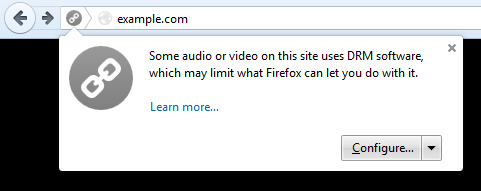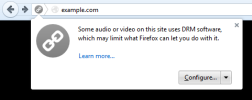A year ago, we announced the start of efforts to implement support for a component in Firefox that would allow content wrapped in Digital Rights Management (DRM) to be played within the HTML5 video tag. This was a hard decision because of our Mission and the closed nature of DRM. As we explained then, we are enabling DRM in order to provide our users with the features they require in a browser and allow them to continue accessing premium video content. We don’t believe DRM is a desirable market solution, but it’s currently the only way to watch a sought-after segment of content.
Today, Firefox includes an integration with the Adobe Content Decryption Module (CDM) to playback DRM-wrapped content. The CDM will be downloaded from Adobe shortly after you upgrade or install Firefox and will be activated when you first interact with a site that uses Adobe CDM. Premium video services, including Netflix, have started testing this solution in Firefox.
Because DRM is a ‘black-box’ technology that isn’t open source, we have designed a security sandbox that sits around the CDM. We can’t be sure how other browsers have handled the “black-box” issue but a sandbox provides a necessary layer of security. Additionally, we’ve also introduced the ability to remove the CDM from your copy of Firefox. We believe that these are important security and choice mechanisms that allow us to introduce this technology in a manner that lessens the negative impacts of integrating this type of black-box.
We also recognize that not everybody wants DRM, so we are also offering a separate Firefox download without the CDM enabled by default for those users who would rather not have the CDM downloaded to their browser on install.
As we’ve discussed, DRM is a complicated issue. We want our users to understand its implications and we have developed a teaching kit to introduce DRM, its challenges, and why some content publishers use it.




